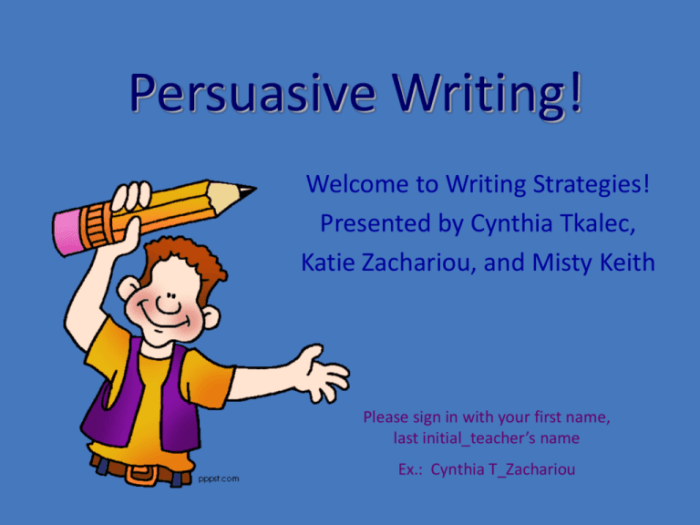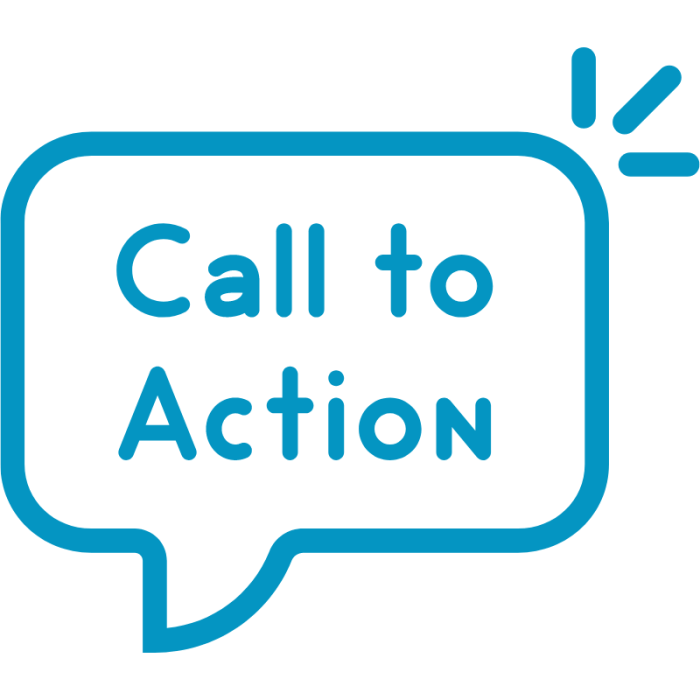Writing Persuasive CTAs dives into the world of compelling calls-to-action, where every word counts and every design choice matters. Learn how to captivate your audience and drive action with powerful CTAs.
Exploring the key elements and strategies behind crafting persuasive CTAs will set you on the path to marketing success.
Importance of Writing Persuasive CTAs
When it comes to marketing, writing persuasive CTAs is like dropping the mic at the end of a killer rap battle – it seals the deal and leaves the audience wanting more. CTAs are crucial for converting potential customers into actual buyers, driving sales, and boosting brand engagement. Without a strong CTA, all your marketing efforts could go down the drain faster than you can say “swag.”
Now, let’s break it down and see why writing persuasive CTAs is the real deal:
Examples of Successful CTAs and Their Impact on Conversion Rates
- Example 1: “Shop Now and Get 50% Off!” – This CTA creates a sense of urgency and entices customers to make a purchase immediately, leading to a spike in sales and conversion rates.
- Example 2: “Join Our Exclusive VIP Club for Special Discounts!” – By offering exclusive benefits, this CTA attracts customers who want to feel special and valued, resulting in increased customer loyalty and repeat purchases.
Remember, a well-crafted CTA not only prompts action but also speaks to the emotions and needs of your target audience.
How CTAs Can Influence User Behavior and Decision-Making
- CTAs with clear and compelling language can guide users through the buyer’s journey, from awareness to consideration to decision, increasing the chances of conversion.
- Using persuasive techniques like scarcity, social proof, and personalization in CTAs can tap into psychological triggers that motivate users to take action and make a purchase.
So, whether you’re trying to sell the latest kicks or promote your killer mixtape, remember that writing persuasive CTAs is the secret sauce to marketing success. Stick to the script, keep it real, and watch those conversion rates soar like a fresh beat on SoundCloud. Stay on top of your game, and always drop those CTAs like they’re hot!
Elements of Effective CTAs

When it comes to creating compelling Calls to Action (CTAs), there are key components that can make all the difference in getting your audience to take action. From the language used to the design and placement, every element plays a crucial role in the effectiveness of a CTA.
Action-Oriented Language
Using action-oriented language in CTAs is essential to prompt users to take a specific action. Phrases like “Buy Now,” “Sign Up Today,” or “Learn More” create a sense of urgency and encourage immediate engagement. By clearly stating what you want the user to do, you increase the likelihood of conversion.
- Utilize strong action verbs to convey a sense of urgency and importance.
- Keep the message clear and concise to avoid confusion or ambiguity.
- Personalize the CTA to resonate with your target audience and make it more relatable.
- Experiment with different language variations to see what resonates best with your audience.
Design and Placement
The design and placement of a CTA can significantly impact its effectiveness. A well-designed CTA that stands out on the page and is visually appealing is more likely to capture the user’s attention. Additionally, placing the CTA in a strategic location where it is easily visible can increase click-through rates.
Remember to make the CTA button large, colorful, and easily clickable to encourage user interaction.
- Use contrasting colors to make the CTA button stand out from the rest of the page.
- Place the CTA in a prominent position above the fold to ensure it is one of the first things users see.
- Consider the flow of the page and ensure the CTA is strategically placed where it makes the most sense in the user journey.
- Test different designs and placements to see which ones result in the highest conversion rates.
Crafting Compelling Copy for CTAs: Writing Persuasive CTAs

Creating engaging and concise CTA copy is crucial for driving action from your audience. By using emotional triggers and strong copywriting techniques, you can increase the effectiveness of your CTAs and encourage more conversions.
Tips for Creating Engaging and Concise CTA Copy
- Keep it clear and concise: Use short and direct sentences to convey your message effectively.
- Use action-oriented language: Encourage users to take immediate action by using verbs like “buy now,” “sign up,” or “learn more.”
- Create a sense of urgency: Incorporate phrases like “limited time offer” or “act now” to prompt immediate action.
- Highlight the benefits: Clearly communicate the value or benefits that users will gain by clicking on the CTA.
Using Emotional Triggers in CTAs
- Appeal to emotions: Use words that evoke feelings like excitement, curiosity, or fear to grab the user’s attention.
- Create a connection: Make the user feel understood and valued by addressing their needs or pain points in the CTA copy.
- Use social proof: Incorporate testimonials or success stories to build trust and credibility with the audience.
Examples of Strong Copywriting Techniques for CTAs
-
“Join thousands of satisfied customers today and experience the difference!”
-
“Unlock exclusive access now and take your business to the next level!”
-
“Don’t miss out on this opportunity to save big – act fast before it’s gone!”
A/B Testing and Optimizing CTAs
When it comes to maximizing the performance of your Call-to-Action (CTA) buttons, A/B testing plays a crucial role in helping you understand what resonates best with your audience. By testing different variations of your CTAs, you can gather valuable data that allows you to make informed decisions on how to optimize them for better results.
Significance of A/B Testing
- A/B testing allows you to compare two or more versions of a CTA to see which one performs better in terms of click-through rates, conversions, and overall engagement.
- By testing different elements such as button color, text, placement, size, and wording, you can identify what drives the most action from your audience.
- Through A/B testing, you can uncover valuable insights into your audience’s preferences and behaviors, enabling you to tailor your CTAs for maximum impact.
Best Practices for Analyzing CTA Data
- Ensure you have a clear goal in mind for each CTA test, whether it’s increasing sign-ups, downloads, or purchases, to effectively measure success.
- Track and analyze key metrics such as click-through rates, conversion rates, bounce rates, and engagement to understand how users are interacting with your CTAs.
- Utilize A/B testing tools and software to streamline the testing process and gather accurate data for meaningful analysis.
Strategies for Optimizing CTAs, Writing Persuasive CTAs
- Implement changes based on A/B test results, focusing on elements that showed significant improvements in performance.
- Continuously test and iterate on your CTAs to stay ahead of changing trends and ensure optimal performance over time.
- Personalize CTAs based on user behavior, demographics, and preferences to deliver a tailored experience that drives action.












